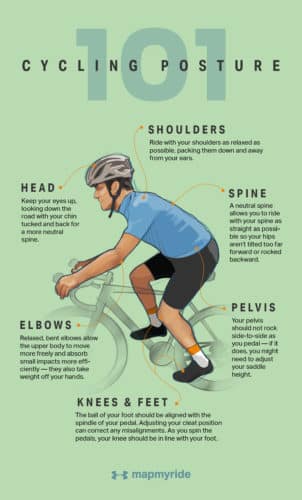Cycling Body Position | Which Is Best?
.
Cycling is a favourite form of exercise for Australians, and with so many of us taking our bikes for a spin each day, it’s critical for us to understand the optimal cycling body position, to prevent ourselves from becoming injured.
In this article, we’ll explore the best cycling body position for when you’re riding, and why paying attention to your posture is more important than you think.
Why is proper cycling posture important?
If you’re an avid cyclist who clocks up tens of kilometres every week, riding with the correct cycling posture is critical to prevent injury. If you’re hunched over your handlebars with your chin jutted outward, your shoulders tense and your spine curved, you might find yourself with severe lower back pain, hip pain, or sciatic nerve pain which shoots down your legs like lightning bolts. This can be exacerbated by sedentary desk jobs, where poor posture is also prevalent. Proper bike posture and desk posture are essential to prevent long term injury, and could save you a lot of money in physiotherapy costs.
Another good reason for proper cycling posture is performance. When you position yourself on the bike correctly, you’ll use more muscle groups, have greater balance, and be able to cover distances more efficiently. You’ll also be able to breathe more easily, which increases the amount of oxygen in your bloodstream, and gives you more energy.
What is the best cycling body position?
It’s important to note that there isn’t a single cycling posture that suits everyone1. Instead, to protect yourself from injury, keep yourself comfortable, and be as efficient as possible while you’re riding, you’ll need to follow some body posture guidelines.
The best illustration that we found is from the image below, which discusses the best positions for your head, shoulders, elbows, spine, pelvis, knees, and feet. If you stick to these recommendations as closely as possible, you shouldn’t have any problems.
Image from Map My Run
Another thing critical for achieving the correct cycling posture is your bike itself. If your bike is over or undersized, it’ll be impossible for you to ride with good posture, and you might quickly find yourself with lower back pain, slower speeds, and a reluctance to ride. If you’re worried that your bicycle is the wrong size, check out our article on how to choose the right bike size.
Other ways to improve your cycling posture
If you’re confident that your bike is the correct size, but you find yourself slipping into the wrong cycling posture, you might need to improve your strength and flexibility. If your hamstrings, quadriceps and hip flexors are tight and inflexible, start stretching them before you go for a ride (or as regularly as possible). Similarly, if your muscles are too weak to support a good cycling body position as you ride, start an exercise program that aims to strengthen your muscles, with particular attention on your core. As you become stronger and more flexible, you’ll find it easier to maintain the proper bike posture, with fewer injuries and better performance as a result.
References
- Sarah Lauzé, How to Maintain Proper Cycling Posture, I Love Bicycling


